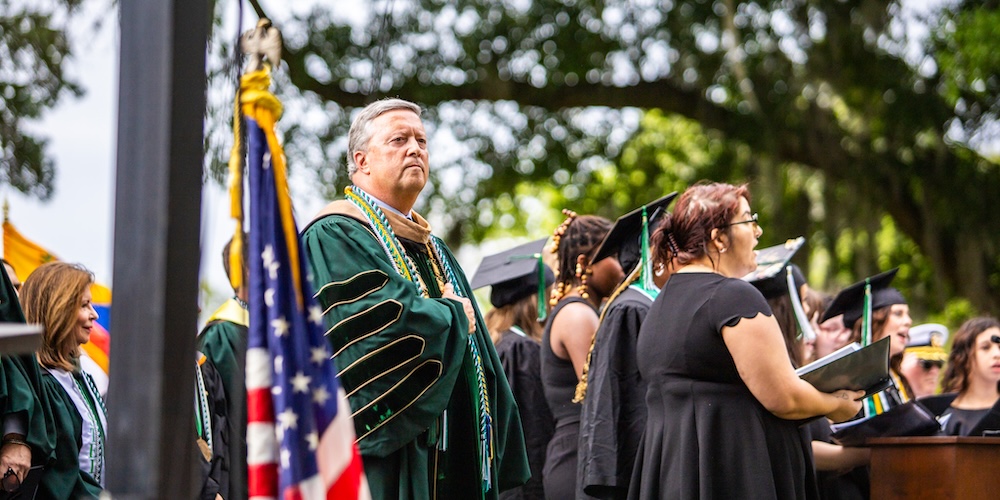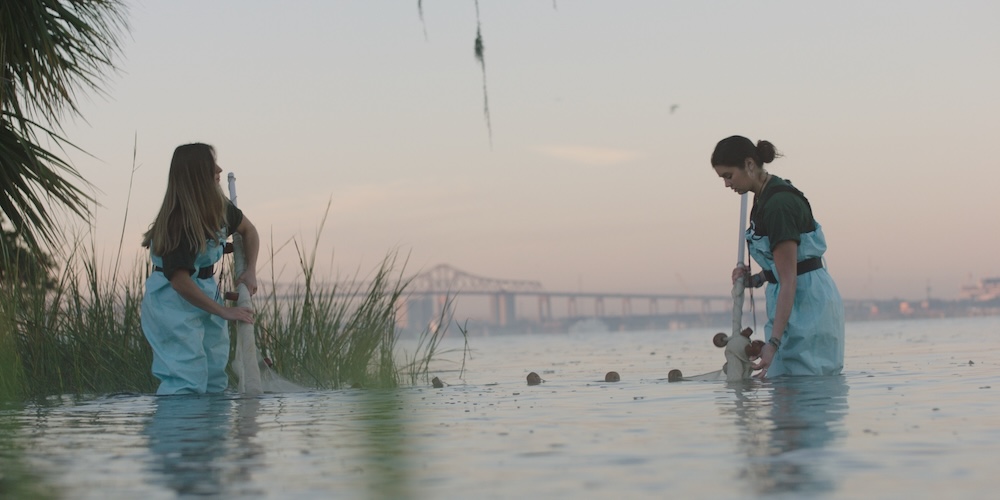The lower St. Johns River basin is an estuary with all the typical characteristics
of a semi-enclosed body of water, open to the ocean and diluted with freshwater. That
fact has been discussed multiple times in River Life. But what does that mean when
it comes to water movement and levels?
The way water in the St. Johns River behaves is subject to multiple factors including
wind speed and direction and tidal cycle. That water is also highly influenced by
human activities, such as clearing land for roads, homes, schools, and shopping malls.
Those construction projects change the rate of freshwater runoff into the river. Other
actions like dredging, building dams, or retention ponds further change the water
movement.
One way to study the impact of things like wind direction and speed on the river is
to create a wind rose. The wind rose is a graphical representation of the speed and
direction of wind arranged around a compass. When you develop such a tool, it looks
a little bit like a rose flower with petals in different directions.
Our predominate winds come out of the northeast, which means that is the direction
we get the strongest winds. Our prevailing winds are those that are most common and
come from that direction more than other directions. Here along our coast, our most
common winds come from the south, either southeast or southwest.
The predominate winds are destructive, causing wind damage and erosion. Think about
nor’easter storms. Prevailing winds tend to be construction, allowing sand to build
on to our beaches. They tend to be generally slow and gentle.
When winds blow out of the north and east, they tend to push water into the river
and to also slow the flow rate out of the river. We get higher tides, and the water
remains higher longer. When the wind is out of the south or west, the opposite is
true. Water is pushed out, resulting in lower water levels that last longer.
Another interesting twist is that the amount of freshwater is limited to rainfall
and to some extent spring flow, whereas the amount of salt water available is unlimited
with the vast Atlantic Ocean just east of the us.
As water from the St Johns River enters the Atlantic Ocean, it tends to flow south
along the coast. It is usually visible as the dark, tannic acid-stained water slowly
mixes with the usually clearer ocean water. How far and how long you can see the river
water also depends on tidal cycle, wind speed and direction along with how much water
is exiting the river at that time.
Coastal ocean water tends to be cloudy due to suspended sediment from wind and wave
action. This is especially true when the wind is from the east. When the wind is out
of the west, that tends to push the “dirty” water offshore, and the water that moves
in to replace it is clear and cool and rises up from deeper offshore water. It is
a coastal upwelling event. Some folks who fish will refer to the phenomenon as a
thermocline. A thermocline is a rapid change in water temperature usually at some
depth. So, while there is a temperature change, it is more accurate to describe it
as an upwelling.
In general, the biomass that exits the river into the ocean will have an impact for
about a mile around the mouth. For the St Johns River, that water flow out represents
about 5.4 billion gallons a day. To say the St Johns River has a significant influence
on coastal ecology and beaches is an understatement.
Glad you asked River Life
Is there any truth that you are retiring from Jacksonville University?
Yes, the rumors are true. I will retire on August 31, 2024. I started at JU on September 1st, 1976. So that completes 48 years on the faculty in a variety of roles. We started the Marine Science major in 1978. I have served in a variety of roles from faculty member to College of Arts and Sciences Dean and lastly Marine Science Research Institute Executive Director. All that after arriving as a visiting professor who expected to stay two years. However, I do intend to continue writing River Life as long as I am able.



